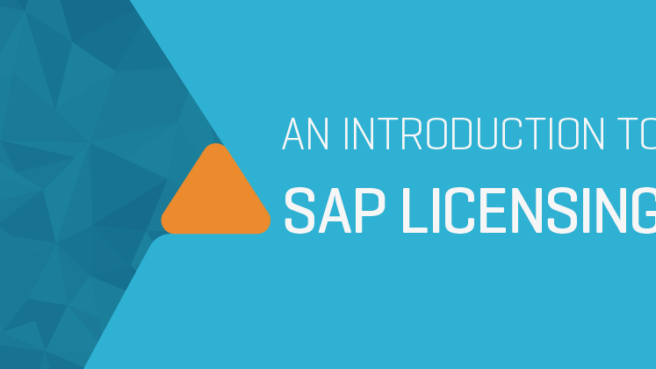An introduction to SAP licensing 2

This blog was updated on 9 December 2016
While there are many constants in Software Asset Management (SAM) and Software License Optimization (SLO) best practices, knowing specifics about the licensing schemes of your individual software publishers is essential.
As one of the so-called “mega vendors”, SAP has its own rules and, in some ways, its own language. But most importantly, its approach to software licensing is very different from that of vendors such as Microsoft, Adobe and other predominantly desktop-focused publishers.
For anyone new to SAP licensing, here’s a quick guide to the basics of how SAP allows you to consume its software.
Users are named
The first critical step with managing SAP licenses is to understand that everything begins with user-based pricing. Each SAP license is created by an SAP administrator and contains a unique 12-character “name” and a license type. SAP does not assign the username, the administrator does.
Controlling the correct number of users is very important for contract compliance and software license optimization. A named user doesn’t even need to be a human. It could be a person, but just as easily it could be a barcode reader, a cash register or a gas meter – to give but a few examples.
License Types
Along with each named user license comes a license type. While some people think the SAP license type determines what a user can do, this not correct – that is actually the purpose of roles.
The license type determines the cost of the license. There are more than 100 different SAP license types, with the least expensive listing for less than US$200, while the most expensive has a list price of more than US$9,000.
In other words, setting the correct license type is crucial from an overall cost optimization and compliance perspective. For simple access to employee/HR functions, an Employee Self Service (ESS) license type is a relatively inexpensive solution. At the other end of the spectrum, a Professional User license provides (subject to roles applied) broad access to all functionality and use of an SAP system.
Roles
Authorization roles are used to limit or control what a named user can do. The roles are defined by the administrator, and should be thought of as part of the overall security and governance of SAP. By limiting the transactional capability of a user through roles, the integrity of the company’s data can be better secured. The administrator can create an unlimited number of roles for an SAP deployment, and there is no direct relationship between license fees and user roles.
Indirect Usage
If a third-party application (such as Salesforce.com), a portal or a bespoke application accesses the SAP financial/ERP data, then the application and user accessing the SAP data require an appropriate license to have compliant access to that data. SAP has specific indirect access licenses for individuals who have not already been assigned a named user license.
The topic of indirect usage is covered in much more detail here.
Reporting the license position to SAP for audits
Companies that use SAP software are obliged to provide an inventory of licenses and activities to SAP so it may carry out its license audit. This process can be very tedious and involves creating what is known as a system measurement for each SAP system (some organizations have hundreds or thousands of SAP systems), and aggregating those manually into a software package provided by SAP called the License Administration Workbench (LAW). The LAW application consolidates all of the various system measurements and sends this audit information to SAP.
Licensing optimization considerations for SAP
SAP administrators and Software Asset Management (SAM) practitioners can optimize their SAP licensing by focusing on the key priorities outlined below. Powerful tools such as Snow Optimizer for SAP Software can be used to analyze, optimize and manage SAP enterprise licensing. In the case of new products such as S/4HANA, carrying out the optimization process can lead to significant savings.
- Minimize the number of named user licenses by reducing or eliminating duplicate, redundant and obsolete user licenses
- Reduce or eliminate roles that are not used and then assure the correct roles are assigned to users based on activities
- “Rightsize” the correct SAP license type with each user license by correlating historic patterns of behavior
- Identify potential contract compliance issues such as indirect licensing access through pre-audit activity and assure proper license compliance.
Summary
There is no getting away from it: SAP licensing is relatively complex. The basic information above focuses on the starting point for all SAP licensing programs – user licensing. Companies operating in certain vertical markets (e.g. Oil and Gas, Aerospace & Defense, Chemicals) will have specific functionality provided by vertical solutions and what are known as “engines”. If you can’t wait to read about this, or need to get on top of your SAP licensing urgently, contact one of our Snow SAP experts today.
Reserve your seat for Snow Software’s webinar on March 15th, 2017 with SAP licensing experts Joachim Paulini, Brain Skiba, and Florian Timm Ascheri On Demand below!